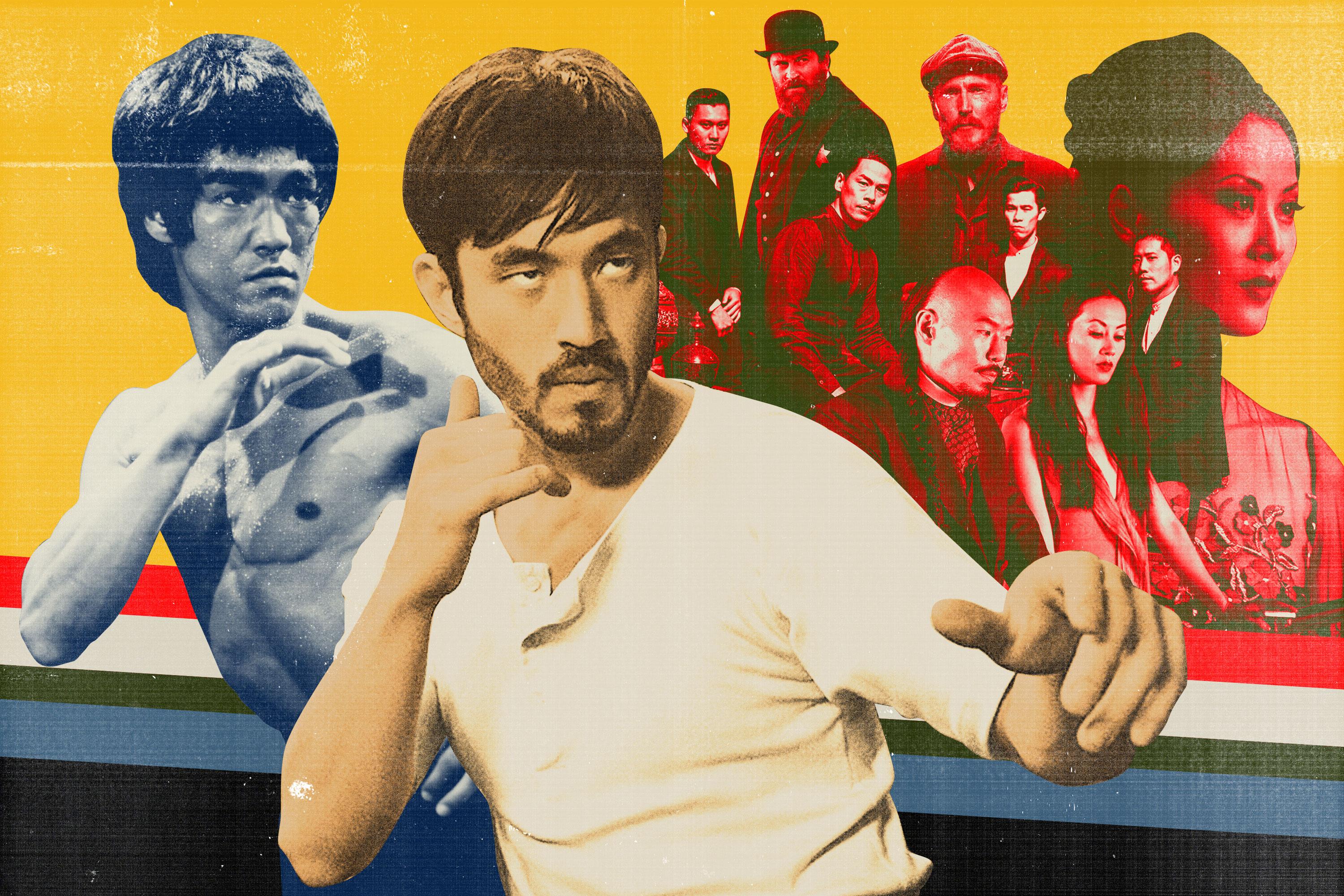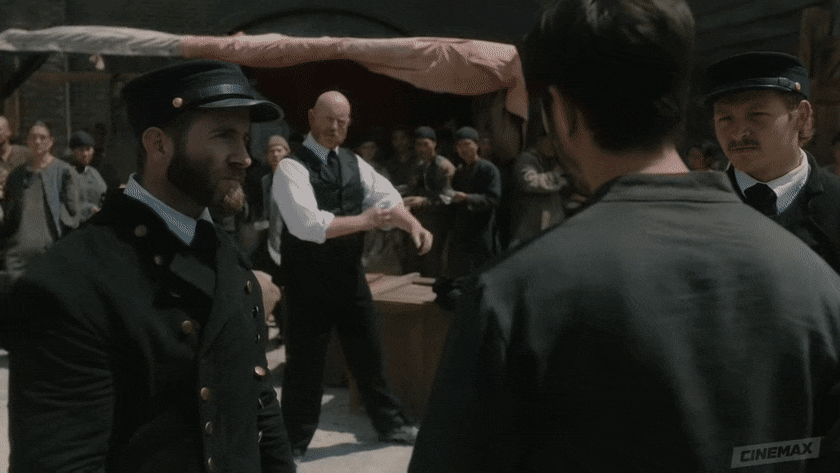
Over the past six months, a series of unseen pieces of footage, hidden for decades, have finally reached a broader audience. In November, Netflix released a long-lost final film from Orson Welles, while Peter Jackson brought World War I footage to breathtaking, colorized life thanks to game-changing restoration technology. Then in March, CNN and Neon Films brought some never-before-seen footage of the 1969 moon landing to the big-screen with the documentary Apollo 11. An Aretha Franklin documentary featuring totally unseen concert footage from the ’70s is currently in theaters. Cinemax is the latest to hop onto this trend, turning an idea from Bruce Lee in the 1970s into a full-fledged TV series.
While Warrior does not, sadly, feature any long-lost Lee footage, the show is inspired by an eight-page treatment from the late martial arts legend that was uncovered by his daughter, Shannon Lee, when she took over her father’s foundation in 2000. Lee’s original pitch, titled “The Warrior,” was about a Chinese martial artist—Lee envisioned himself in the main role—traversing the American West. Studios weren’t willing to green-light the idea, which Lee attributed to the notion of a non-white lead being considered a risk. Complicating matters was the 1972 series Kung Fu, starring David Carradine, which basically had the same premise but was never credited to Lee.
After Shannon shared her father’s treatment with Justin Lin—the director behind four films in the Fast and Furious franchise, as well as Star Trek: Beyond—the concept for Warrior was born. Building off Lee’s original idea, executive producers Lin and Jonathan Tropper (Banshee) focused the series on Ah Sahm (played by Andrew Koji), a Chinese martial artist who emigrates to San Francisco in search of his estranged sister. From there, Warrior unfolds as an exploration of the city’s infamous Tong Wars and the Chinese immigrant experience. And, as befitting a show following a martial arts master, there is fighting. Lots of it. The best way to describe Warrior is that it feels like Peaky Blinders, if Peaky Blinders had a roster of gangsters who could roundhouse kick you into space.
Of course, coming up with the idea of “Peaky Blinders with martial arts based on the work of Bruce Lee” is one thing; actually executing the fight scenes is another. To help me break down the process behind Warrior’s bountiful ass-kicking, I spoke with the series’ stunt coordinator, Brett Chan, whose résumé also includes stunt coordination work on Marco Polo, Iron Fist, and Skyscraper. We discussed the show’s visceral fight scenes, the ways Warrior pays homage to Bruce Lee, and how the perception of martial arts in Western cinema has evolved in the past decade.
When you first were hired for Warrior, it must’ve been cool right off the bat knowing you’d get to work on a show that’s based on Bruce Lee’s writings.
Yeah, they gave me a brief description of it. We didn’t go too much into it when we first met, we talked about my martial arts background, my film background, what I’d be doing. They went through a rigorous process of picking people for the show who were gonna be a good fit. We were shooting in South Africa. You’re away from home, so you wanna be with people that are easy to work with, open to ideas, are very creative. Especially when you’re working around the legend of Bruce Lee. You really wanna get that right. You never wanna be the person that jumped on board and got it wrong—especially with Bruce Lee, who’s an icon.
Were there any specific directions from Justin Lin or anyone about how the fight scenes should be handled? It seems like you were allowed to be as violent and bloody as you’d like—which isn’t always the case on television.
Bruce Lee did films with wires and stuff, but that really wasn’t his passion. He wanted to make things authentic to martial arts. For all the things to gel well together, we created the most efficient ways to deal with situations when you have to get into fights and whatnot. Or if you come across a bunch of angry Tongs with hatchets [laughs].
Jonathan, he does write a lot of the action—and him and I talk about it—and he tells me what kind of gruesomeness we want to see in certain scenes. But mainly, it’s about the characters.
When I build the fights, I have to build it according to the characters. Before we get into choreography, I talk to the actors; I see what character they play in the script and how they want to go with it, and I can tailor each style to each kind of person. So if you’re watching Warrior, and you could only see the shadows of the people fighting, you’d be able to determine who’s who just based on how they move.
From what I’ve seen—and correct me if I’m wrong—there doesn’t appear to be any wire work in the fight scenes.
Yeah, that was intentional. We didn’t want that because we wanted to be gritty and realistic. I basically gathered my team from around the world—a lot of people from China, from Korea, from the U.S., from Germany, from Canada, just from all over the place—because everyone has a different concept of certain things. I try and make my pieces a little well-rounded, so even though I have six Chinese guys [in a fight], their martial arts are all a little bit different. The movement styles are gonna be different, so if I ever have to pull from a pool of fighting styles, I’ve got a diverse group.

Obviously, the fact that this show is based on something Bruce Lee initially came up with is a big selling point. In what ways did you try to breathe Lee’s influence into the fighting scenes?
We built that into the choreography based on what’s happening. I’ll choreograph the fight, I’ll put those parts in and see what [Jonathan] likes and doesn’t like. Our Bruce Lee character—“Bruce Lee character,” I say that very lightly—plays to the likeness of Bruce Lee but is not really Bruce Lee. The story wasn’t written for Bruce Lee to be Bruce Lee—he wrote the story for him to play a role. It’s kind of the same thing on Warrior.
I built [Andrew’s] movement to kind of move like [Lee] and adapt some of his concepts on how he would execute or deal with a situation—like how he’d use a weapon or how he’d disarm somebody or take someone out. We did that so there’s still a little aspect of Bruce Lee, whether it’s how he strikes, how he blocks, or how he approaches a situation.
Are viewers going to pick up on a very specific Bruce Lee homage at any point in the show? Something that gets people to think, “Oh, this feels very Enter the Dragon”?
I don’t think Jonathan wanted to make it predictable, but he would do it. If something happened in a situation, he’d be like, “Oh, that was kind of like an homage to this part!” Which is neat. Andrew Koji will do the homage, but he’ll put a little twist on it, which is made for him. But it’s still the homage.
From the episodes I’ve seen, you guys have incorporated some wing chun into the series. Are there any other fighting forms that were utilized? Like, Joe Taslim is obviously quite good at pencak silat.
Joe has a judo background. It’s not even a striking background. He learned on the spot how to kick certain ways—though he’s very coordinated and he’s very athletic—he does have a knack for picking up martial arts. His movements are very judo-based, his stance is low and big. His character—if he gets a hold of you, you just don’t want him to get a hold of you. Because the moment he strikes, he hits hard, and when he gets a hold of you, something’s gonna be broken.
So that’s him, whereas Ah Sahm is very fast. If you throw a punch, he’ll strike your fist, he’ll strike your elbow, he’ll strike your joint. He’s so fast at it, and Andrew himself is super fast, so we’re able to utilize some Bruce Lee concepts for where he’s going.
There’s little things you’re going to see where, if you’re a martial artist, you’ll pick it up. You don’t want to make [the show] seem like a realm where there’s only one style of martial arts; it’s never like that. And we try that in other ways, like how a guy on the street would use a knife versus how a martial-arts-trained guy would use a knife. It’s just a little bit different.
Without giving too much away, do you have a favorite fight scene from the series? Something that you were able to execute you weren’t able to do before?
The cell fight, in the jail cell, that was really good. [Editor’s note: The cell fight is in the third episode and is as advertised.]
Being a TV series, we don’t get much time to do it. That fight was in a small jail cell, and we had the make the choreography work, along with the camerawork, within the jail cell. We could pull a wall out every once in a while, but that can’t happen too often because we have, let’s say, 11 hours of shooting for the day.
You’ve worked in Hollywood as a stunt performer and stunt coordinator for a while. Has the way fights are staged evolved since you started in the industry? It seems like there’s been a shift away from the shaky, Bourne-style fighting to longer takes with cleaner compositions, which Warrior also favors.
We try and create the longer takes. Film has evolved a lot. It depends on which Bourne you’re talking about: Bourne Identity was shot a lot different than Bourne 2, 3, and 4. It has evolved a lot more from back in the day, because we’ve evolved as an industry. Action directors are coming up more, and more performers and crewmembers are savvier with camera angles and camera shooting and with the mixing of the apertures and frame rates. It has evolved. Now, Bruce Lee’s martial arts have been hybridized and everyone has taken some of the aspects and thrown them together to make it their own, which is really cool.
This interview has been edited and condensed for clarity.

